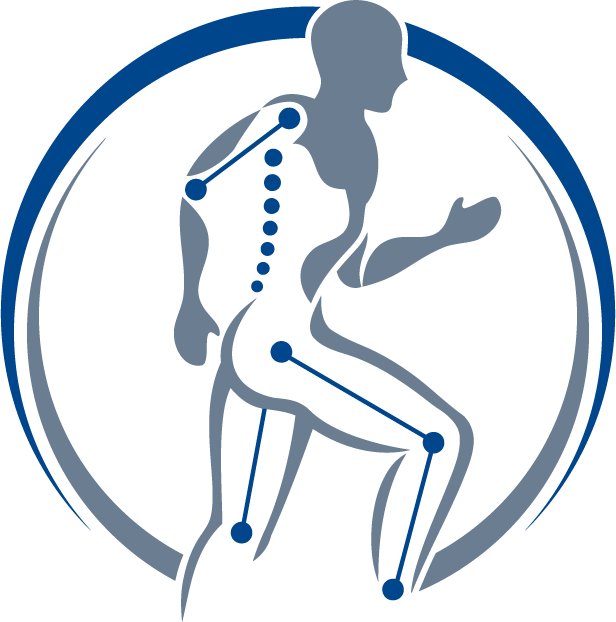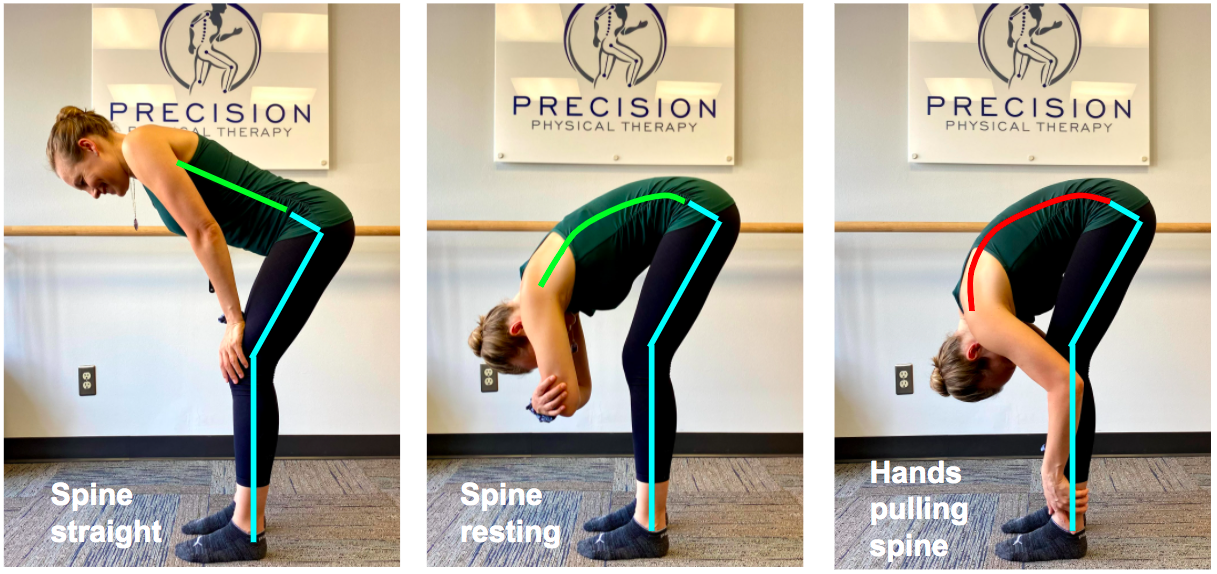Are your hamstring stretches effective?
Do you remember the ‘sit and reach’ test from the presidential fitness program in grade school? We would all line up and see who could reach to and past their feet as a measure of flexibility. We thought we were seeing who had the most flexible hamstrings, however this test is not actually specific for hamstring muscle length! You can reach to your toes and still have moderately short hamstrings if all the ‘reach’ in the test is coming from your spine.
Pay attention to the photo below of a sit and reach posture. Notice how the end of the hamstring range can be found by sitting up straight and pulling with the hands generates movement from the low back.
Position 2 is the end range hamstring length for this individuals. Notice spine posture is the same in figure 2 & 3. The distance between ‘reach’ or hand posture in 3 & 4 does not come from the hamstring, but the spine.
This test illustrates how a generally good stretch can be taken to extremes when used as a measurement tool and turned into a competition. This competitive nature in stretching can lead to all sorts of problems at the spine. For this reason, you never want to ‘win’ in yoga or stretching (unless it comes really easy for you)! This is why instructors emphasize technique during stretching as more important than achieving a final posture.
Do you know if you have short or long hamstrings? Let’s find out! Sit in a chair with your hips about the height of your knees. Sit up nice and tall. Can you fully straighten your knee keeping your back tall and straight? If you can straighten your knee keeping your back straight then you have long or flexible hamstrings. If your back starts to round before your leg straightens, your hamstrings may be short or stiff.
In general, activities like running and weight lifting shorten your hamstrings, while activities like dancing and yoga lengthen your hamstring. If you are in the group of people whose back starts to round before your knee straightens, your body is telling you that the stiffness of your hamstring leads your back to move too readily. To make sure you are getting the benefit of your hamstring stretch, you should be mindful of your spine posture throughout the stretch. This also means hamstring stretching, done well, will be helpful for you. Check out the stretches below to identify when the stretch in the hamstring ends and the stretch from the low back begins.
With stiff hamstrings, the hamstring stretch is applied with just resting hands on knees and straightening the low back. By relaxing the arms and head the spine is gently stretched, but not aggressively. Applying further force by pulling with the hands significantly increases the stress on the spine without effectively changing the hamstring length.
With stiff hamstrings, the hamstring stretch is applied lightly with just placing the foot on a step. By leaning forward from the hip the stretch is increased to end range for the hamstring maintaining flat spine posture. Allowing gravity to pull the upper body toward the leg, if gentle, may be safe but will not significantly increase the hamstring stretch.
If you are struggling and not sure if you are stretching correctly - this stretch is usually safe and effective because the floor keeps your spine in good posture for you. If you want to make real changes in hamstring length, you need to stretch consistently for longer durations of time. Shorter duration of stretching at the end of a workout feels great and helps you to relax, but will not help you lengthen your hamstrings, even if you do it after every workout.
We hope this blog provides you with a happy spine while hamstring stretching!
To your movement health,
Ann & Jesse
This blog is not intended as medical or professional advice. The information provided is for educational purposes only and is not intended to serve as medical or physical therapy advice to any individual. Any exercise has potential to cause injury or pain if it is incorrectly done or is not the right exercise for an individual’s medical or physical problems. You should consult with a physical therapist or medical provider for individualized advice.






